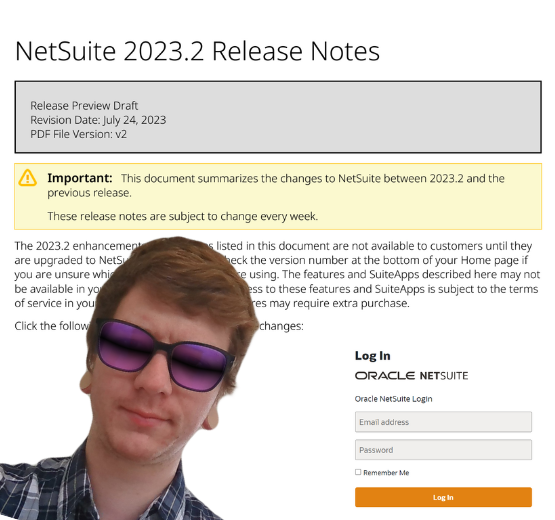Embracing digital transformation, moving to the cloud and future-proofing a business has never been more pertinent. With a shift to remote working as a result of the pandemic, cyber security being an ever-present concern, and the ongoing quest for business efficiencies, companies everywhere have accelerated digital transformation projects. Nevertheless, it is also true that a large number of businesses are resistant to change.
Some companies currently using one of the Microsoft Dynamics AX products that are nearing the end of their product lifecycles, may be currently wondering whether the migration to Microsoft Dynamics 365 Finance is an urgent or even necessary move. Here, we outline the key reasons businesses should be seriously considering the upgrade, if they are to thrive and grow in today’s fast-paced economic landscape.
Functionality is key in a technology-led business landscape
As technology, the workplace and the world in general evolves, businesses and organisations must commit to evolving along with it. The Microsoft Dynamics AX desktop-based application has a large infrastructure footprint that is hosted on premise or by partners, which severely limits the functionality compared with a cloud-based solution such as Microsoft D365 Finance.
While the expiration of Microsoft Dynamics AX will be preceded by a period of mainstream support up until October of this year – and an extended support option offered beyond this date for those organisations choosing not to upgrade – this will only provide security updates and some open self-service capabilities. Firms in any sector should not be limiting functionality in the current climate, but instead embracing technology that allows agility, scalability, and capability to operate a remote workforce. Bringing together all the disparate operational elements into one version of the truth across the organisation is a better option than choosing to take a seemingly simpler path, which could present a real hindrance to growth.
Mobile, managed, modern
Of course, the key benefit of a cloud-based solution is the fact it is mobile: business systems and data can be accessed any time, anywhere, from any device. The modern business landscape had already moved beyond a regular 9 to 5, but this has been further accelerated by the pandemic-induced remote working model that is likely to form part of the new normal. Having a solution in place that supports this will be vital – and enabling employees to access systems, files and data easily is no longer a luxury but a necessity in this era of digital transformation.

The Enterprise Resource Planning (ERP) module in D365 offers a managed infrastructure, hosted by Microsoft – which means scalability will never be an issue. Any growth, fluctuations or rapid operational changes can be accommodated easily as and when required. Server and hardware maintenance costs are completely negated, as the solution is hosted on the Microsoft servers and security is robust with Microsoft Azure’s built-in disaster recovery and 24/7 technical support, for full protection and peace of mind.
The importance of the F word
Finance is a kingpin of any business – from effective management of it in relation to accounting through to reporting, analysis and forecasting, which aids the sound financial decision making crucial to any organisation’s growth.
Microsoft D365 Finance offers Artificial Intelligence capabilities that enables accurate cash flow projection, customer payment prediction and identifies current and future trends – providing a data-driven solution to financial management. Invoice processing provides infinite levels of efficiency, increasing workforce productivity through the automation of time-hungry tasks – so resource can be channelled into other areas that will be more impactful for the business.
And as many organisations are affected by a changing regulatory landscape, global payments or multi-currency requirements, having a solution in place that provides the utmost security will significantly aid any organisation. All while functionality effectively manages complex financial requirements across any number or territories or countries.
The power is in your hands
One of the biggest considerations for businesses using ERP and Customer Relationship Management (CRM) systems is the ability to customise the system to the needs of the organisation, adding on business applications when needed. Microsoft’s D365 addresses this with the Power Platform. Power Apps enables the creation of apps in line with business data, while Power Automate facilitates the automation of processes – even with third party apps – in an easy way thanks to its ‘no code’ approach. Power BI (Business Intelligence) allows the connection of data sources to provide real-time insights that are valuable in a variety of business settings.

Furthermore, at Microsoft Ignite in March, new capabilities were announced across Power Platform to enable citizen developers, business analysts and professional developers to build applications quickly and cost-effectively. These included a next generation of Power BI Premium, with improved utilisation metrics and pay-as-you-go options, and new AI capabilities in Power Virtual Agents – particularly valuable for organisations using bots, which can learn and improve.
There is a raft of new capabilities within Power Automate Desktop, which automates time-consuming manual tasks across popular applications such as SharePoint, Excel, Outlook and OneNote. A web and desktop recorder can capture steps in an automation, while a visual drag-and-drop designer pulls flows into a logical order. With more than 370 pre-built actions, the feature is simple to use and enables quick-start. Microsoft provides a deep dive on the full functionality for organisations wanting more information on this.
The news of a solution coming to an end, and the prospect of implementing a whole new system, can seem stressful. However, it is clear that Microsoft D365 offers a future-proof intuitive solution for businesses and organisations in a variety of sectors. You may run a service business and want to be able to predict, detect or resolve an issue before a customer even knows about it. By ensuring your team has the right tools and information they need to resolve an issue first time, customer experiences can be enhanced – and that’s where Microsoft Dynamics 365 Service comes in. Or, you may operate a manufacturing plant or a distribution hub that needs to effectively manage inventory and logistics, and plan an agile supply chain. For this, you need Microsoft Dynamics 365 Supply Chain Management. A not-for-profit organisation needing an effective marketing channel through to which to engage and retain supporters will benefit greatly from Microsoft Dynamics 365 Marketing.
There need not be any concerns or reluctance to switch due to perceived hassle around a transitional period, as Microsoft D365 is based around applications that employees will already be familiar with if they have been using Microsoft Dynamics AX. This ensures both training and implementation can be seamless.
More information about Microsoft Dynamics 365 and the full capabilities across key business functions can be found here.
If you’d like to learn more about how the team at BrightBridge could help your business make the switch to Microsoft D365, get in touch today.
Keep reading

What is a NetSuite implementation partner? How do you choose one?

Technology fit for total customer service in 2024

Retail and wholesale distribution: how to improve supply chains

Ditching Sage 1000: what you need to know from businesses that have done it

6 ways AI-ready Microsoft Dynamics 365 helps chartered associations serve members

6 retail and wholesale distribution challenges and how NetSuite solves them

The most exciting features in Microsoft Dynamics 365 2023 Release Wave 2

How to manage a new NetSuite Release: one expert's update process

What’s in NetSuite Release 2023.2?

